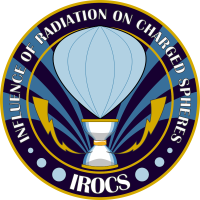IROCS

The Influence of Radiation On Charged Spheres.
The question of how planets were formed became a subject of science since in 1992 the first planets outside our solar system were discovered. Today, we are able to observe planets in the process of formation using very large telescopes. On the way from interstellar dust to a fully evolved planet, a growth of 40 orders of magnitude is necessary, and therefore plenty of physical processes are included. But still, there are a lot of open questions regarding the evolution of grains in the size-range of cm and dm.
To understand what the key processes of the planet formation are, many aspects have been studied, e.g. experiments including electrostatic charges have been developed. Our research group has performed several experiments on the ground as well as on the ISS to study charged spheres aggregation. Even though the experiment conditions were the same, the results were not. On the ground we could see far more aggregates and though more charge than on the ISS. The possible solution to this problem might be the radiation, since we know that the radiation level on the ISS is about 100-times higher than on ground.
We decided to build an experiment for the German-Swedish student program REXUS/BEXUS to find out whether the radiation could impact on the surrounding gas or material and ionize it. This would lead to the charge neutralization/decrease. The experiment will fly on the stratosphere balloon BEXUS29 later this year.
Find us also in the social networks
- Facebook: /irocs.bexus
- Twitter: @irocs_bexus
- Instagram: @irocs.bexus







